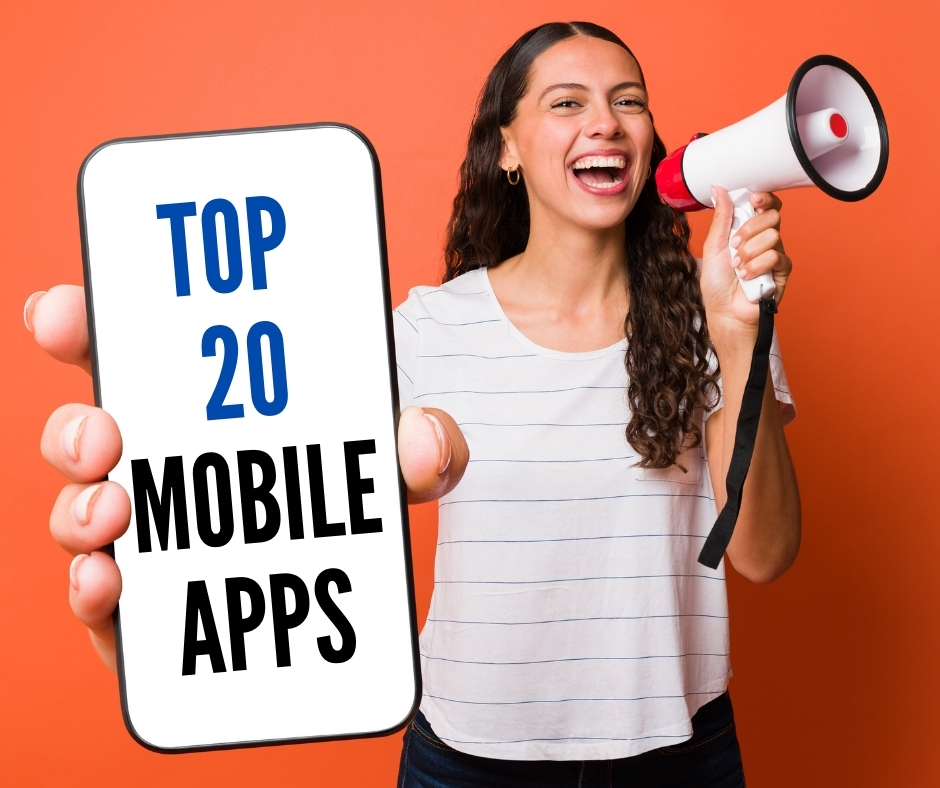
Mobile Applications: A Catalyst for Global Conservation and Community Empowerment
I. Executive Summary
This report investigates the transformative potential of mobile applications in bolstering environmental conservation efforts and empowering communities across the globe. The increasing ubiquity of mobile technology and the rise of online communities present unprecedented opportunities to address pressing global challenges. This analysis reveals a diverse landscape of mobile applications that support sustainability, from tracking carbon footprints to facilitating citizen science initiatives. Furthermore, mobile apps are playing a crucial role in community development by enhancing communication, providing access to vital resources, and fostering economic empowerment in various sectors, including education, healthcare, and agriculture. While challenges related to adoption and effectiveness exist, the evidence suggests that strategically designed and implemented mobile solutions, often integrated with online communities, can yield significant positive impacts. Key recommendations for stakeholders include investing in user-centric app development, bridging the digital divide, fostering collaboration, and conducting rigorous evaluations to maximize the benefits of mobile technology for a more sustainable and equitable world.
II. Introduction
The 21st century has witnessed an unparalleled proliferation of mobile technology, with smartphones becoming indispensable tools in the daily lives of billions worldwide. This ubiquitous connectivity presents a unique opportunity to address some of the most pressing challenges facing humanity, particularly in the realms of environmental conservation and community well-being. Mobile applications, leveraging the power of these devices, offer innovative solutions to monitor environmental changes, engage citizens in conservation actions, and deliver essential services to communities in diverse geographical locations. Simultaneously, the rise of online communities has created virtual spaces for collaboration, information sharing, and mutual support across various sectors. The intersection of mobile applications and online communities holds the key to unlocking scalable and impactful solutions for a sustainable future. This report delves into the current landscape of mobile applications in environmental conservation and community development, analyzes their adoption rates and effectiveness based on available research, explores the role and potential of online communities in these domains, and identifies key challenges and opportunities for future initiatives. By examining successful case studies and considering future trends, this report aims to provide a comprehensive understanding of how mobile technology can catalyze global conservation and community empowerment.
III. The Landscape of Mobile Applications for Environmental Conservation
The global effort to address environmental degradation and promote sustainability has seen a surge in the development of mobile applications targeting various aspects of conservation. These apps cater to a wide range of users, from individuals seeking to reduce their impact to professionals working on the front lines of environmental protection.
One prominent category is
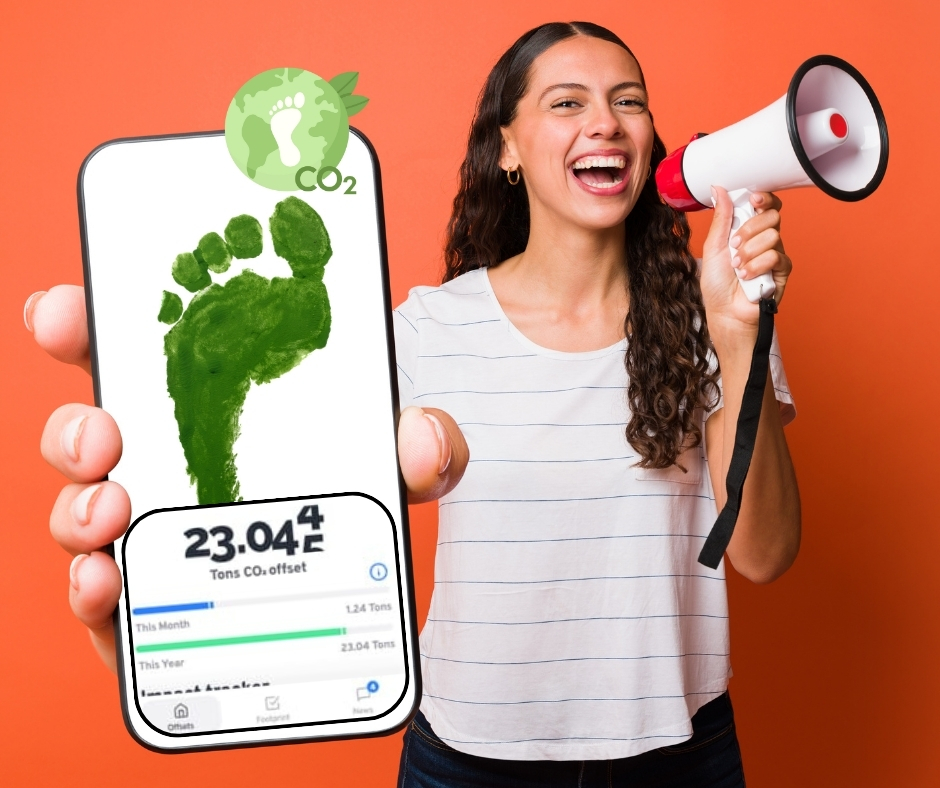
Carbon Footprint Tracking Apps
– For eg:
- Floop App and
- AWorld App
These applications allow individuals to monitor their daily activities, particularly related to food consumption and lifestyle choices, and calculate their associated carbon emissions. By providing a tangible measure of their environmental impact, these apps aim to foster personal awareness and motivate users to adopt more eco-friendly habits. Personalized tips and challenges further encourage behavioral changes towards sustainability.
The transition to cleaner energy sources is supported by
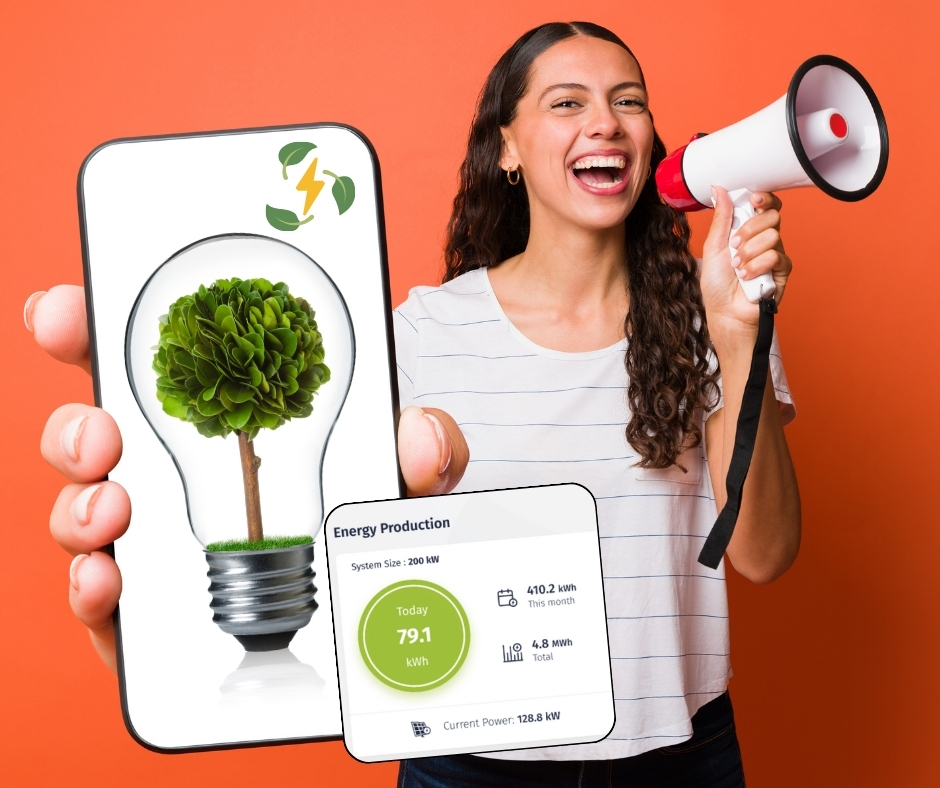
Renewable Energy Apps,
-For eg:
- Renewables App,
- Green Energy App,
- Scoop App, and
- mySolarEdge App.
These apps offer information about different forms of renewable energy, assist in managing renewable energy systems like solar panels, and even facilitate communication and task management for renewable energy field teams, as exemplified by the Scoop app. This highlights the diverse applications of mobile technology in advancing the renewable energy sector, catering to both individual consumers and industry professionals.
Energy monitoring and management apps
– For eg:
- Loop App,
- Emporia App,
- Smappee App, and
- HomeWizard Energy App
These apps empower users to gain insights into their household energy consumption. Often paired with smart home devices, these apps provide real-time data on energy usage and offer recommendations for optimizing consumption, leading to potential cost savings and a reduced environmental footprint. The integration of smart technology with mobile platforms allows for greater control and efficiency in energy management.
Promoting sustainable transportation is the focus of
Eco-friendly Transportation Apps
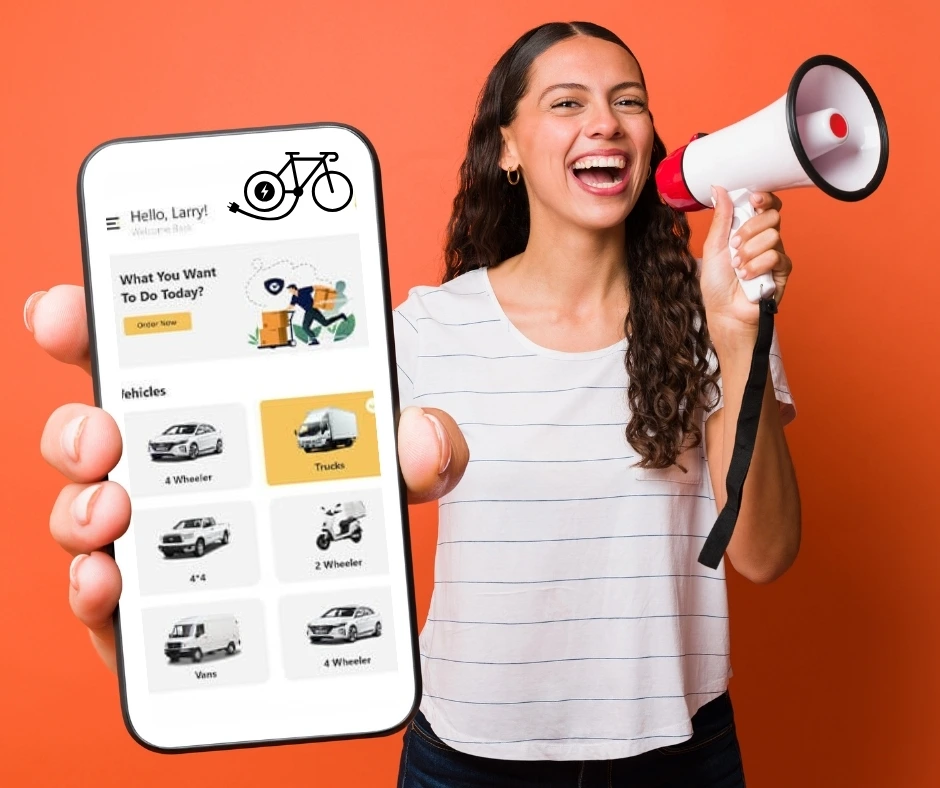
– For eg:
- True Energy App,
- Bolt App,
- TIER App, and
- Nextbike App.
These apps facilitate the use of electric vehicles by providing information on charging locations and optimizing charging schedules, often prioritizing renewable energy sources. They also support shared mobility options like e-scooters and bike rentals, encouraging alternatives to private car usage and contributing to lower emissions in the transportation sector.
In the realm of agriculture,
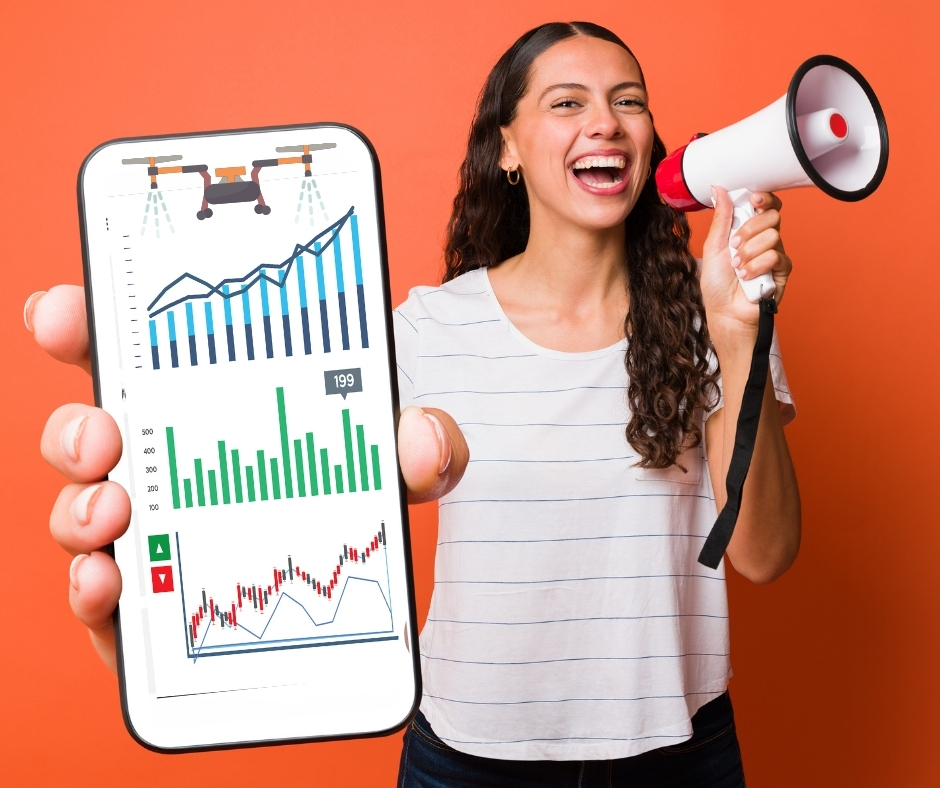
Crop Monitoring and Digital Agriculture Apps
-For eg:
- OneSoil App,
- Libra Cart App,
- AGvisorPRO App,
- Auravant App, and
- EOSDA Crop Monitoring App
These mobile apps are revolutionizing farming practices. These apps provide farmers with access to critical data derived from satellite imagery, weather forecasts, and field analytics, enabling them to track crop health, manage fields more efficiently, and make data-driven decisions for sustainable agriculture. This technology supports optimized resource management and potentially reduces the environmental impact of farming while improving yields.
Directly addressing deforestation,
Tree Planting and Reforestation Apps
-For eg:
- Forest App
- Ecosia App
These mobile apps engage users in supporting reforestation efforts. Forest, a productivity app, allows users to earn points by focusing on tasks, which can then be redeemed to plant real trees. Ecosia, a search engine available as a mobile app, dedicates at least 80% of its ad revenue profits to tree-planting projects worldwide. The app features a tree counter, visually demonstrating the impact of user searches on the environment. Ecosia’s servers are powered by 200% renewable energy, further minimizing its environmental footprint. With approximately 20 million active users per month, Ecosia exemplifies the potential for widespread environmental impact through user-friendly mechanisms integrated into daily online activities.

Ethical shopping apps
-For eg:
- Ethy App,
- Good on You App
- Shop Ethical App,
- Yuka App,
- OLIO App, and
- Too Good To Go App
These mobile apps empower consumers to make more sustainable and ethical purchasing decisions. Ethy helps users discover ethical businesses based on their values, including those focused on organic produce and reduced plastic. OLIO connects neighbors to share surplus food, reducing food waste. Too Good To Go allows users to purchase unsold food from restaurants and stores at discounted prices, directly tackling food waste. Good Guide provides ratings on products based on their health, environmental, and social impacts. These apps increase transparency and enable consumers to align their spending with their environmental and ethical values.
A broad range of

Social Impact and Sustainable living Apps
further contribute to environmental awareness and action.
- JouleBug App gamifies sustainable living by offering challenges and rewards for eco-friendly activities.
- Love Clean Streets App allows UK residents to report local environmental concerns like graffiti and fly-tipping, utilizing photo documentation and GPS location.
- Litterati App aims to build a global registry of litter by enabling users to photograph and tag the trash they collect, contributing to a better understanding of pollution sources. Grid Carbon measures the carbon intensity of energy use in the UK, allowing users to schedule energy-intensive tasks during lower emission periods.
- iRecycle App provides information on recycling various materials.
- Geco Air App offers personalized advice to improve driving efficiency and reduce environmental impact.
- Save Heat Easy App helps users monitor and reduce their energy consumption at home.
- Good Guide App provides sustainability ratings for a wide range of products. Loss of the Night raises awareness about light pollution by allowing users to report star visibility.
- Refill App helps users find locations to refill reusable water bottles.
- Water Print App and CarbonTrack App allow users to track their water and carbon footprints, respectively. These diverse apps demonstrate the multifaceted ways in which mobile technology can promote sustainable practices and engage individuals in environmental stewardship.
IV. Empowering Communities Through Mobile Applications
Beyond environmental conservation, mobile applications are playing an increasingly significant role in aiding and empowering communities worldwide across various sectors.
In citizen science and wildlife conservation, a plethora of mobile apps enable individuals to contribute to scientific research and conservation efforts. iNaturalist allows users to record observations of plants and animals by uploading photos, which are then identified with the help of AI and verified by a community of experts. This data is invaluable for monitoring biodiversity and tracking the spread of invasive species. eBird focuses specifically on bird sightings, allowing users to record the species and number of birds they observe, along with the location. This data contributes to monitoring bird populations and understanding the effects of climate change on bird migration patterns. Project Noah provides a platform for users to share photos of wildlife and plants, tag them with relevant information, and participate in research missions. Seek by iNaturalist utilizes image recognition technology to help users identify plants, animals, and fungi around them. WWF Together offers interactive stories and facts about endangered animals, raising awareness about their conservation. The detailed functionalities of iNaturalist and eBird demonstrate how these apps facilitate data collection and species identification, empowering citizens to contribute directly to scientific understanding and conservation. WWF Together uses interactive elements like augmented reality and origami to engage users and educate them about endangered species and WWF’s conservation work.
In the realm of
Community Development and Engagement, a wide array of mobile applications facilitates communication, collaboration, and access to resources.
- My Civic App, for example, connects residents with local government services, enabling them to report issues like potholes, access information, and even pay bills through a single app.
- eGood App connects communities, companies, and causes, allowing businesses to donate a percentage of purchases to worthy causes in return for customer loyalty.
- Share The Meal app, an initiative of the UN World Food Programme, allows users to donate small amounts to provide meals for children in need.
- HELPme App is designed for schools and organizations to provide easy access to support and resources for their members, including a crisis text line and an anonymous help request system.
- The CAREAPP in Howard County, MD, serves as a comprehensive directory of over 2,500 local programs for various needs, streamlining the process of finding and connecting with community resources.
These examples illustrate how mobile apps can enhance civic engagement, facilitate social good initiatives, and improve access to essential community services.
Mobile applications are also playing a crucial role in Education in Developing Countries. With high mobile device penetration in many developing regions, e-Learning Mobile Apps offer a lifeline for students with limited access to traditional learning environments.
- WorldReader App provides access to a library of hundreds of books for children in underserved communities.
- Khan Academy App offers a wide variety of courses for free, from primary education to advanced subjects.
- Duolingo App provides language learning opportunities in an engaging and interactive format. The dominance of mobile web traffic in Africa underscores the importance of mobile-first educational solutions in such contexts.
Addressing healthcare disparities, mobile apps for Healthcare access in rural areas are increasingly being utilized.
- Telemedicine apps enable virtual consultations with healthcare providers, allowing patients in remote areas to receive medical advice and care without the need for extensive travel. These apps can also provide access to medical records, medication reminders, and remote patient monitoring through wearable devices. While challenges related to technology literacy and internet connectivity in rural areas exist, the potential of mHealth apps to improve healthcare access for underserved populations is significant.
For farmers in developing countries, mobile apps offer valuable resources and connections.
- Maano App, a virtual farmers’ market app, connects smallholder farmers directly with buyers, ensuring fairer prices for their produce.
- The GeoFarmer App acts as a hub for farmers and agriculture experts to exchange vital information.
- Nuru App helps farmers identify and prevent crop pests like the fall armyworm.
- TruTrade App serves as a resource for pricing information and facilitates payment transactions between farmers and consumers.
- The Regreening Africa App assists farmers in collecting data on land restoration efforts.
The increasing adoption of mobile internet technology by farmers in regions like Pakistan indicates a growing reliance on mobile solutions to improve agricultural practices and market access.
V. The Synergy of Mobile Apps and Online Communities
Online communities, virtual spaces where individuals with shared interests or goals can connect and interact, offer numerous benefits across various domains. They foster connections among like-minded individuals, enabling the sharing of information, experiences, and mutual support. Online communities can build a sense of belonging, enhance engagement around specific topics or causes, and increase brand loyalty for organizations that host them. They also provide cost-effective channels for customer support and offer valuable feedback and insights for businesses.
These benefits extend across geographical boundaries. Online communities facilitate collaboration and communication between individuals located in different regions, offering diverse perspectives and enriching discussions. For rural areas, where opportunities for in-person engagement might be limited, online communities provide a vital platform for connecting with others, accessing information, and participating in discussions on issues that matter to them.
The advantages of online communities are also evident across various sectors. In conservation, they can mobilize citizen scientists, facilitate the sharing of ecological observations, and coordinate conservation actions. In healthcare, online health communities provide crucial support and education for patients, enable collaboration among healthcare professionals, and foster research and innovation. For education, online learning communities enhance the learning experience, provide peer support among students, and offer professional development opportunities for educators. Businesses can leverage online communities to grow customer loyalty, gather valuable feedback on products and services, and improve their marketing efforts.
Mobile applications play a crucial role in facilitating access to these online communities. The widespread use of smartphones allows individuals to connect with online communities anytime and anywhere, enhancing engagement and participation. Many online community platforms, such as Mighty Networks, Discord, Slack, and Circle. so, offer dedicated mobile apps that provide a seamless and user-friendly experience for accessing forums, chats, events, and other community features. Mobile apps also enable proactive engagement through push notifications, ensuring that community members stay informed about new content, discussions, and events. This mobile accessibility is vital for fostering active and thriving online communities across all sectors and regions.
VI. Analyzing the Adoption and Effectiveness of Mobile Apps
Research on the adoption rates of mobile apps in conservation and community development reveals varying levels depending on the specific context and technology. In conservation, studies indicate that the adoption of specific practices like rotational grazing remains relatively low in some regions. While nature-related apps have been available, citizen science apps constituted a small fraction of the overall app market in 2013, suggesting a potential for growth in subsequent years. However, in specific contexts, adoption rates can be significant, as seen with the “Agricultural Guide” app in Saudi Arabia, which has been adopted by over 30% of the farming population. Furthermore, a considerable percentage of farmers in Pakistan utilize mobile devices with internet capabilities for agricultural purposes. These findings highlight that adoption is influenced by factors such as perceived benefits, ease of use, access to technology, and support from relevant organizations or governments.
The adoption of community development apps is similarly influenced by a range of factors, including technology literacy, cost, accessibility, and the extent to which communities are involved in the app development process. Addressing the digital divide and ensuring that apps are tailored to the specific needs and capabilities of the target communities are crucial for successful adoption.
Studies analyzing the effectiveness of mobile apps in conservation and community development demonstrate promising results. In conservation, citizen science apps have proven to be powerful tools for collecting large-scale data, leading to new scientific discoveries and enhanced biodiversity monitoring. Mobile data collection tools have improved the efficiency and accuracy of field research, as evidenced by the time savings and enhanced data quality reported by organizations like the San Diego Zoo. While social media can play a role in disseminating conservation messages, quantifying its direct impact on conservation outcomes remains a challenge. However, the integration of data from citizen science apps into scientific models, such as species distribution models, is demonstrably improving the accuracy of these models.
In community development, mobile apps have been shown to enhance community engagement, improve access to resources, and promote positive behaviors. The increasing number of downloads of environmental and health-related apps suggests a growing public interest in utilizing mobile technology for social good. Online communities facilitated by mobile apps have been found to improve engagement and foster a sense of belonging. mHealth apps are contributing to improved mental health outcomes and the promotion of healthy behaviors. The success of initiatives like the ESP app in promoting social participation among older adults further highlights the potential of mobile apps to address critical social needs. Ensuring community involvement in the development of eHealth apps is essential for maximizing their effectiveness and relevance.
VII. Case Studies: Demonstrating Successful Mobile App Initiatives
Several case studies illustrate the successful implementation and impact of mobile apps in both conservation and community support initiatives.
- In Tanzania, the Open Foris mobile data collection tools improved the accuracy and timeliness of forest inventory and monitoring, aiding in better policy making.
- In California, USA, iTree facilitated more effective urban forest management through mobile data collection.
- The University of Lincoln developed the iBiodiversity App to engage local communities in mapping ecosystem services and habitat connectivity.
- In Cameroon, ex-hunters are using the iNaturalist app to report sightings of the endangered goliath frog, contributing to its conservation.
- Wildchain, a smartphone game, allows users to support real-life conservation projects by virtually adopting endangered animals.
- World of the Wild engages users in virtual wildlife conservation scenarios that mirror real-world actions.
- EarthRanger provides real-time data for protected area management, enhancing security and ecological monitoring.
- In community support, the Find ‘n Fix app in Johannesburg empowers citizens to report road infrastructure issues, leading to more efficient maintenance.
- The CAREAPP in Howard County, MD, connects residents with a vast network of community resources.
- During Hurricane Harvey, Zello, a walkie-talkie app, played a crucial role in coordinating disaster relief efforts.
- Too Good To Go effectively reduces food waste by connecting consumers with surplus food from local businesses.
- The HELPme app provides students and community members with easy access to support and resources.
VIII. Challenges, Opportunities, and the Future of Mobile-Driven Conservation and Community Support
Despite the significant potential, the adoption and effectiveness of mobile apps in conservation and community development are not without challenges. In conservation, these include the need for adequate infrastructure and internet availability, ensuring data literacy among users, maintaining the quality of citizen science data, and sustaining long-term user engagement. For community development apps, challenges involve bridging the digital divide, addressing cost and funding limitations, providing sufficient user training, ensuring data privacy and security, catering to diverse languages and accessibility needs, and maintaining user interest over time. Online communities also face hurdles such as managing disruptive behavior, maintaining engagement, ensuring content quality, addressing privacy concerns, and demonstrating their value. Healthcare apps in rural areas encounter technical and usability challenges, as well as the need for cultural sensitivity and clear guidelines for appropriate use.
However, these challenges are accompanied by significant opportunities and promising future trends. Emerging technologies like AI, IoT, and 5G offer the potential for smarter and more efficient solutions. Gamification and incentives can be further leveraged to enhance user engagement and motivation. Personalized experiences and adaptive learning can make apps more effective. Greater integration with existing systems and platforms can streamline workflows and maximize impact. A continued focus on user-centric design and accessibility will ensure that these technologies benefit a wider range of users. Building stronger online communities that are seamlessly integrated with mobile apps will foster collaboration and support. Increased emphasis on data privacy and security will be crucial for building trust and encouraging adoption. Finally, developing sustainable business models will ensure the long-term viability and impact of these mobile-driven initiatives.
IX. Conclusion and Recommendations
Mobile applications have emerged as powerful tools with the potential to significantly boost environmental conservation efforts and empower communities across the globe. By facilitating data collection, raising awareness, improving access to resources, and fostering collaboration, these digital solutions are addressing critical challenges in diverse sectors. The integration of mobile apps with online communities further amplifies their impact by creating virtual spaces for connection, support, and collective action. While challenges related to adoption, effectiveness, and sustainability persist, the evidence and case studies presented in this report demonstrate the tangible benefits of strategically implemented mobile-driven initiatives.
To fully realize the transformative potential of mobile technology, stakeholders should consider the following recommendations:
- NGOs and Conservation Organizations: Invest in the development of user-friendly and engaging mobile applications that support citizen science, environmental monitoring, and awareness campaigns. Explore the use of gamification and incentives to enhance participation and build strong online communities around conservation goals.
- Government Agencies: Prioritize initiatives that aim to bridge the digital divide by improving internet access and digital literacy, particularly in underserved communities. Fund the development and deployment of accessible mobile apps that provide essential community services and support environmental sustainability.
- Technology Developers: Focus on creating user-centric, accessible, and secure mobile applications for conservation and community development. Incorporate features like offline functionality for use in remote areas and ensure seamless integration with online community platforms.
- Researchers: Conduct rigorous evaluations to assess the long-term impact and effectiveness of mobile apps and online communities in achieving conservation outcomes and improving community well-being. Identify best practices for their design, implementation, and scaling.
- Community Leaders: Promote the adoption and use of mobile apps and online communities within their communities to enhance communication, facilitate access to vital resources, and foster collaboration around shared goals for conservation and development.
By embracing innovation, addressing challenges proactively, and fostering collaboration among stakeholders, mobile applications and online communities can serve as powerful catalysts for creating a more sustainable, equitable, and empowered world.
Why Choose Creative Web Mall for Custom Mobile App Development?
When it comes to custom app development, Creative Web Mall stands out with its expertise in UX, Web Design, and delivering tailored solutions. The company’s focus on creating user-centric apps ensures that businesses can enhance Employee Engagement, foster collaboration, and stay ahead in the competitive market.
With a proven track record, Creative Web Mall delivers apps that are not only functional but also aesthetically pleasing and intuitive. Whether you’re looking to implement a Social Intranet or develop a custom business app, their team ensures your app meets your business objectives while offering an unparalleled user experience.
Categories: